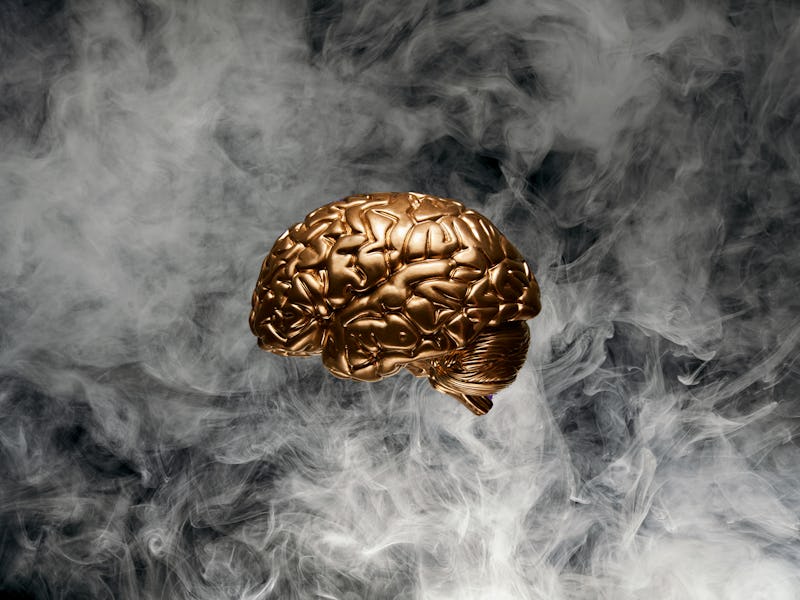Raising the tobacco age to 21 could have lasting effects on teen brains
"There is definitely a difference in the brain of an 18-year-old versus a 21-year-old."

The United States’ Congress is set to make a radical change to the way that 18 year-olds across the country buy nicotine products (mostly vapes, they’re teens after all). From 2020, the legal smoking age is expected to rise to 21 across the country.
While each state and city has the ability to implement a higher smoking age if they so desire (it’s already 21 in New York and San Antonio), the blanket age across the US has been 18 since the 1980s.
Now, thanks to a perfect storm of political pressure and new statistics revealing how thousands of teens have picked up an e-cigarette habit in the past two years, this decades-old policy is going to change.
The measure to raise the smoking age is attached to a larger spending bill, that, if signed by President Trump, will prevent a government shutdown that will occur Friday this week if the bill is not signed.
Advocacy groups like the American Lung Association hope the move could help keep tobacco out of the hands of teens, and slow the dramatic uptake of vapes among teens — but neuroscience reveals that there are other reasons why raising the age might be a good thing for teens, experts tell Inverse.
"There is definitely a difference in the brain of an 18-year-old versus a 21-year-old."
The three years between 18 and 21 are crucial for brain development. As a consequence, this small change could help prevent a powerful nicotine addiction from taking hold, Francis Leslie, a neuropharmacologist at the University of California Irvine, says.
“Using tobacco while the brain is immature can negatively impact brain development and have long-term negative consequences, so delaying is protective from that perspective,” Leslie tells Inverse.
How is an 18-year old’s brain different than a 21 year-old’s?
The biggest differences between a 21-year-old and an 18-year-old brain can be found in the prefrontal cortex. This area of the brain is related to executive functioning, which includes planning, working memory and impulse control, Marina Picciotto, a psychiatrist at Yale University, says. Previous studies show that key circuits in the region tend to be offline during the teen years, and slowly start to come online over time.
The tobacco purchasing age will likely rise to 21 in 2020.
“There is definitely a difference in the brain of an 18-year-old versus a 21-year-old. In fact, the part of our brain that allows us to plan and make good decisions, the prefrontal cortex, is the latest part of the brain to develop,” Picciotto tells Inverse.
During adolescence, the brain is still pruning away unnecessary connections. But it is also strengthening existing connections through a process called myelination, which is when fatty, white tissue becomes wrapped around neurons. In turn, myelination helps certain neurons fire together and enables the brain to create stronger, and more wide-reaching connections — including the complex networks that underlie executive function, research suggests.
That process isn’t anywhere close to done until around the age of 25, says Picciotto. So while a 21 year-old’s brain is far from a stable environment, it’s further along than an 18 year-old’s.
Addiction and teen brains
Introducing substances into the chaotic environment of a teen brain has consequences. Drinking is linked to accelerated decline in grey matter in adolescent brains, which, in turn, may drive teens to drink more. Marijuana use can also impact the pruning process, and have detrimental effects on teen brains.
In terms of nicotine, Picciotto explains that the teen brain may be especially ripe for fostering the formation of a nicotine habit.
“The ability of nerve cells to strengthen their connections, the reactivity of the dopamine (reward) system, and the lack of maturation of brain areas that inhibit the more ancient parts of the brain that drive us to seek out reward and avoid punishment all lead to increased use and abuse of nicotine and other drugs by adolescents,” Picciotto says.
Reward sensitivity may lead teens to develop a nicotine habit that has an even stronger root in their brains. Rodent studies suggest that teen brains are particularly vulnerable to reward signaling in the dorsal striatum, an area of the brain that’s involved in habit formation. One 2016 study demonstrated that when adolescent rats anticipated getting rewards, they had higher activation of neurons in that brain region compared to adults.
The results “suggest a mechanism for how rewards might shape adolescent behavior differently, and for their increased vulnerabilities to affective disorders,” the authors wrote. There’s also evidence that teens are far more vulnerable to developing lasting nicotine habits, too. The Department of Health and Services reports that three out of every four teen smokers keep smoking into adulthood.
"…limiting access to addictive drugs before the early to mid-twenties is an effective way of preventing addiction."
Importantly, this research is largely focused on how teens will react to the nicotine in combustible tobacco products like cigarettes. In the present day, far more teens are vaping, in which nicotine delivery is quick, smooth, and loaded into the body at far higher levels than cigarettes. Just one JUUL pod contains as much nicotine as a 20-pack of cigarettes, and since teens may already be predisposed towards habit formation to start with, the risks could be even higher.
Pushing the tobacco age back could help some teens sidestep that neurological minefield — and save them the trial of quitting a powerful nicotine addiction later on.
“I think there is clear evidence from human brain imaging, human and rodent behavioral studies and animal neurobiology studies that limiting access to addictive drugs before the early to mid-twenties is an effective way of preventing addiction,” Picciotto says.